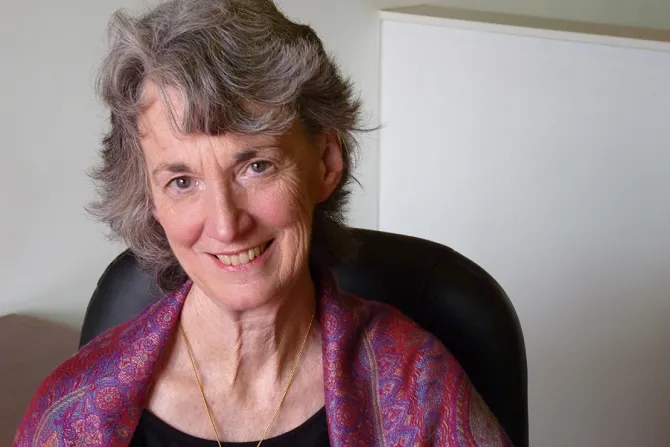Denver, Colorado, Oct 22, 2014 / 03:02 am
Catholic victims of the Soviet Union's cruel anti-Christian persecutions faced execution, exile and arbitrary imprisonment for their faith – and now a new website tells their stories.
"The persecution of the Church was immediate. It started within a couple weeks of the October Revolution," Geraldine Kelley told CNA Oct. 10.
"It was brutal. It focused first of all on the confiscation of church property and the arrest of the hierarchy, (then) the decrees that prohibited teaching religion to anybody under the age of 18."
Kelley helped translate the entries for the "Book of Remembrance: A Martyrology of the Catholic Church in the U.S.S.R." The book documents 1,900 biographies of Roman and Eastern Catholic clergy and laity persecuted under Soviet communism from 1918 to 1953, when Joseph Stalin died.
The book, now available at the website of the University of Notre Dame's library, records the fate of victims who were shot and "simply liquidated," as well as those sent to the prison camps who did not survive. The fate of some victims is unknown.
Some survived, including the "small class of priests" who were able to exit the Soviet Union for other countries and continents.
Like other religious believers in the Soviet Union, Catholics who did not suffer outright persecution could still face severe social penalties. Being known as a believing Catholic could result in career penalties, the loss of one's job, or similar threats to family members, Kelley said.
The "Book of Remembrance" biographies were collected by Father Bronislaw Czaplicki and Irina Osipova for a martyrology commission of the Apostolic Administration for Catholics of North European Russia.
The Polish-language first edition was published in 2000, drawing on archives from Soviet state security organs. Kelley voiced hope that the publication of the book on the internet would help bring renewed attention to the martyrs.
Kelley, who holds a doctorate in Slavic Languages and Literature, said "there were many, many more martyrs in the 20th century than in all the years of Christian history totaled up together."
Although the Soviet Union's Christians were primarily members of the Orthodox Church, the Soviet Union was also home for many Catholics due to the Russian Empire's political control of Poland and other areas. Some citizens were Catholics descended from German colonists invited into Russia for political reasons.
Kelley said that historians of the Soviet gulag often approach the topic "in terms of the large numbers involved." She preferred to examine the stories of individual persons, such as the housekeepers of rectories and choir directors.
"Who were these people? What kind of lives were they leading when this happened to them?"
Kelley became interested in the archives of persecuted Catholics after she heard of a community of Eastern Rite Dominican sisters founded in the 1910s in Moscow.
"I came across references to these sisters and wanted to know more about them. Who were they?"
One of the Dominican sisters was Mother Catherine of Sienna. She was born into a noble family in Moscow on Dec. 23, 1882 and given the name Anna Ivanovna. She married in 1903, and was received into the Catholic Church in Paris in 1908.
She later entered the novitiate for the Third Order Dominicans, in 1913, while her husband was ordained an Eastern Catholic priest in 1917.
On the night of November 12, 1923, she and nine other sisters were arrested on charges of leading a "counter-revolutionary" organization.
After being sentenced to several years in prison, she told her sisters: "Most likely each of you, having fallen in love with God and now following Him, has asked more than once in your heart that the Lord give you the opportunity to share in His sufferings. That moment has arrived. Your wish to suffer for His sake has now been fulfilled."
Mother Catherine was released from prison in the early 1930s, only to be arrested again and sentenced to eight years in a labor camp. She died July 23, 1936 in a prison hospital.
The cause for her canonization was opened in May 2003. She is now recognized as a Servant of God, along with fifteen other Catholics who died for their faith under Soviet persecution.
Kelley said many of the Dominican sisters would have been in their early 20s when first arrested.
"They were sent to prison camps for three year to five year terms, and then after they would serve their term, they would find out that their term was extended. They would get released, and then get re-arrested. Some of these women were still serving in the camps when Stalin died in 1953. We're talking 30 years."
Although the sisters were scattered throughout the Soviet Union, Kelley found it "amazing" that they would still encounter each other over the years.
"When you think of how large the country is, and how many hundreds of thousands of people were sentenced, and how many prison camps there were, the fact that you would meet anyone you knew seems astounding to me," she said.
Kelley has translated a book focusing on these Dominicans, Irina Osipova's "Brides of Christ: Martyrs for Russia."
Kelley voiced concern that the canonization cause for Servant of God Anna Ivanovna Abrikosova is losing momentum, given that it depends on the interest of the Catholic faithful, "and so few Catholics know of her."
She said that Catholicism in the Soviet Union had difficulty surviving three generations of atheistic repression.
"Although we know with what enthusiasm the Church was able to rebound in Poland and in parts of Ukraine, that third generation of oppression made a big difference. The Church in Russia was much more thoroughly eradicated, liquidated, repressed, annihilated."



